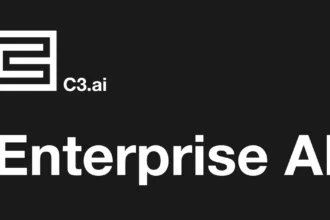Table of Contents
ToggleAMD Acquires Team Behind AI Chip Startup Untether AI
AMD has acquired the engineering team behind Untether AI to boost its AI hardware and software development capabilities. The acquisition focuses on enhancing AMD’s AI compiler, kernel development, SoC design, and product integration efforts. AMD officially confirmed this strategic move on Thursday.
Details of the Acquisition
AMD’s spokesperson stated that the company entered a strategic agreement to bring the talented AI hardware and software engineers from Untether AI onboard. The transaction emphasizes advancing AMD’s core AI development skills. Financial terms were not shared publicly.
As part of the acquisition, Untether AI will cease supplying and supporting its speedAI products and the imAIgine software development kit. Untether AI executive Bob Beachler expressed pride in the startup’s pioneering work in AI chip technology and gratitude toward their team and partners. The team’s future contributions are anticipated within AMD.
About Untether AI
Founded in 2018 and based in Toronto, Untether AI specialized in AI inference chips for edge environments and data centers. Their technology centered on an innovative “at-memory” architecture designed to dramatically boost performance while reducing power consumption.
This architecture lowers data movement inside chips, improving throughput and energy efficiency. Chris Walker, formerly CEO of Untether AI and an ex-Intel executive, departed in May 2023.
Untether AI’s Products and Technology
Untether AI’s standout product was the speedAI240 Slim AI inference accelerator card. Released in October, it achieved three times greater energy efficiency in closed data centers and six times in edge settings compared to competitors.
In peer-reviewed MLPerf benchmarks, the speedAI240 card was fastest on the ResNet-50 image classification test, outperforming other single PCIe cards in both data center and edge categories. This 75-watt PCIe design had customers including J-Squared Technologies (U.S.) and Ola-Krutrim (India).
Market Demand and Partnerships
Untether AI’s chips gained attention because they addressed critical energy usage concerns. Traditional GPUs, like those from Nvidia, consume up to 120 kilowatts per rack, limiting deployment in power-constrained environments such as small data centers at the edge.
According to Walker, the market still has vast untapped potential for energy-efficient AI processors, especially in industrial and enterprise edge applications. Untether AI maintained partnerships with semiconductor companies including Ampere Computing, Arm, and NeuReality. Solution providers such as Boston, Asa Computers, and Vertical Data also collaborated with them.
Ola-Krutrim partnered with Untether AI to co-develop next-generation data center AI solutions before the acquisition.
AMD’s Broader AI Strategy
This acquisition aligns with AMD’s ongoing AI expansion plans. It aims to enhance its AI chip performance and better challenge Nvidia’s dominance in AI hardware.
The deal follows a recent AMD acquisition of Brium, a compiler startup focused on optimizing AI performance for AMD’s Instinct data center GPUs and related products.
Summary of Key Points
- AMD acquired Untether AI’s engineering team to advance AI hardware/software and SoC design.
- Untether AI will stop producing its speedAI chips and software kits after the deal.
- Untether AI specialized in energy-efficient, high-performance AI inference chips based on “at-memory” architecture.
- The speedAI240 accelerator card showed leading energy efficiency and performance benchmarks.
- Strong market demand exists for low-power AI chips for edge and enterprise use.
- Untether AI partnered with companies like Ampere, Arm, and Ola-Krutrim prior to acquisition.
- AMD continues expanding AI capabilities with acquisitions to compete with Nvidia’s AI ecosystem.
Exclusive: AMD Acquires Team Behind AI Chip Startup Untether AI
AMD has officially acquired the talented team behind Untether AI, the startup known for building faster, energy-efficient AI inference chips for edge devices and data centers. This acquisition reveals AMD’s bold move to boost its AI hardware and software expertise. Interested in how this could shake up the AI chip world? Let’s dive into the details and why it matters.
On a typical Thursday, without fanfare, AMD confirmed that it had strategically secured the brains behind Untether AI. A spokesperson told CRN, “AMD has entered into a strategic agreement to acquire a talented team of AI hardware and software engineers from Untether AI.” This is more than a casual hire; it’s a full-on talent acquisition aimed at optimizing AMD’s AI compiler and kernel development, digital and SoC design, and product integration capabilities.
AMD’s spokesperson cheerfully added, “We are excited to welcome the team’s unique expertise to AMD,” making it clear this team brings something special to the table. Not just any group of engineers — these folks built cutting-edge AI hardware from the ground up.
The Untether AI Story: More Than Just a Startup
Untether AI, founded in 2018 in Toronto, Ontario, quickly made waves with its “at-memory” architecture. What does that mean? Instead of moving data back and forth endlessly (think of unloading groceries repeatedly instead of putting them directly on the shelf), they brought the computing closer to the memory. This reduced data traffic, boosting both speed and energy efficiency.
The startup wasn’t shy about claiming their tech dramatically improved both performance and power consumption, a critical feature for edge environments (devices operating far from central data centers) and enterprise data centers alike.
Chris Walker, who took on the CEO role early last year after a stint at Intel, made it clear in an interview with CRN that minimizing data movement inside chips was the way to go. “We’ve proven that when you reduce data traffic in the chip, you’re improving both throughput and energy efficiency,” he explained. He left the company in May, right before the acquisition was confirmed.
speedAI240: The Powerhouse That Proved Performance
Untether AI’s flagship product was the speedAI240 Slim AI inference accelerator, launched last October. The company boasted that this PCIe card showed triple the energy efficiency in closed data center environments compared to competitors, and six times better efficiency in edge setups. If numbers tell the story, that’s a blockbuster.
Not only did it save power, but speedAI240 also held the crown for fastest performance on the ResNet-50 image classification test among single PCIe cards in both data center and edge categories. This benchmark matters for AI workloads like recognizing images and patterns.
Customers took notice too. The card was already adopted by J-Squared Technologies, a rugged embedded computing provider in the U.S., and Ola-Krutrim, an AI cloud computing firm from India, indicating Untether AI’s global impact despite being a young startup.
Why Did AMD Snap Up Untether’s Team?
AMD is on a mission to expand its AI capabilities and step up to Nvidia’s dominance. This deal fits right into that strategy. Untether AI’s team brings skills in digital and SoC design, kernel development, and AI compiler optimization — all key to making chips smarter and faster.
Interestingly, AMD has been busy recently, having announced just a day earlier its acquisition of Brium, a startup specializing in AI compiler optimization. It seems AMD isn’t playing around. They want to build a top-tier stack — from the chip silicon to software — ready to compete fiercely.
Moreover, the acquisition was about talent and technology, not taking over Untether AI’s existing products. Untether AI’s leadership confirmed that their journey ends here as their speedAI products and imAIgine software development kits will no longer be supplied or supported.
But as Untether AI’s executive Bob Beachler poignantly noted, “We are proud of the pioneering research that underpinned our work in advancing state-of-the-art AI chip technology. We look forward to the contributions our world-class team will make with AMD.” This isn’t a farewell; it’s a handoff to a bigger stage.
Untether AI’s Market and Partnerships: Appetite for Efficient AI
Before the acquisition, Untether AI was already harvesting interest in the market. According to Chris Walker, there’s strong demand for chips that don’t guzzle power like Nvidia’s hefty GPUs, which push racks to 120 kilowatts—a staggering power load. For many smaller data centers and industrial edges, power is scarce and expensive. Untether’s tech was designed for precisely these markets.
The team tapped into potential customers hungry for efficiency and performance. Partnerships with companies like Ampere Computing, Arm, NeuReality, and solution providers like Boston, Asa Computers, and Vertical Data show Untether AI had woven a solid web of industry relationships.
A particularly close collaboration was with Ola-Krutrim. Their “multi-faceted partnership” included co-developing next-gen data center solutions. Clearly, the ecosystem recognized the promise housed in Untether’s innovative architecture.
What Does This Mean for AMD and AI Forward?
AMD’s acquisition signals a bigger emphasis on AI hardware innovation, placing AI chip efficiency and performance front and center. The combination of Untether’s unique architectural prowess and AMD’s semiconductor muscle could yield chips that power everything from data centers to smarter IoT devices without frying everyone’s electricity bill.
AMD is sharpening its edge — pun intended — by integrating deep expertise in AI hardware and software. By acquiring teams like Untether and startups like Brium, AMD is building a pipeline for developing efficient, blazing-fast AI chips that can compete with Nvidia.
With AI applications exploding everywhere—self-driving cars, industrial automation, smart homes—having efficient edge and data center solutions is crucial. Will AMD’s move accelerate the arrival of next-gen AI chips with unmatched energy savings? Time will tell, but the pieces are falling into place with this acquisition.
Lessons and Recommendations for Tech Enthusiasts
- Understand energy efficiency in AI hardware: Untether AI’s focus on reducing data movement within chips is a key lesson. When designing or choosing AI solutions, seek technologies that optimize internal data flow to save power.
- Watch for integration of startups: The tech landscape is fast-changing. Startups like Untether often pioneer innovations that giants like AMD later scale.
- Follow the talent: Acquisitions often mean that the real value lies in the skilled teams. The people behind the tech are leading the way.
- Keep an eye on partnerships: Collaborations, such as Untether with Ola-Krutrim, often herald future developments and market adoption.
Are you excited to see how AMD evolves with this fresh infusion of AI ingenuity? What industries would benefit most from ultra-efficient AI chips? Drop your thoughts and let’s discuss how this shapes the future of computing.
What team did AMD acquire from Untether AI?
AMD acquired the AI hardware and software engineering team behind Untether AI. This includes experts focused on AI compiler and kernel development. The move also strengthens AMD’s digital and SoC design skills.
What will happen to Untether AI’s existing products?
Untether AI will no longer supply or support its speedAI chips and imAIgine software. The startup ended its product line as the team joined AMD. Customers and partners are advised about this shift.
What technology did Untether AI bring to the table?
Untether AI specialized in AI inference chips using “at-memory” architecture. This design reduced data traffic inside chips, improving power efficiency and performance for edge and data center uses.
How does AMD’s acquisition fit into its overall AI strategy?
The acquisition adds to AMD’s efforts to boost AI computing. AMD aims to improve AI programming tools and compete with Nvidia by expanding its chip design and software expertise.
Why was there a demand for Untether AI’s products?
Untether AI chips consumed much less power than Nvidia’s GPUs, which use up to 120 kilowatts per rack. Their technology met growing needs in power-constrained data centers and industrial edge applications.
What partnerships supported Untether AI’s growth before the acquisition?
Untether AI worked with companies like Ola-Krutrim, Ampere Computing, Arm, and others. These partnerships focused on developing new AI data center solutions and expanding market reach.





